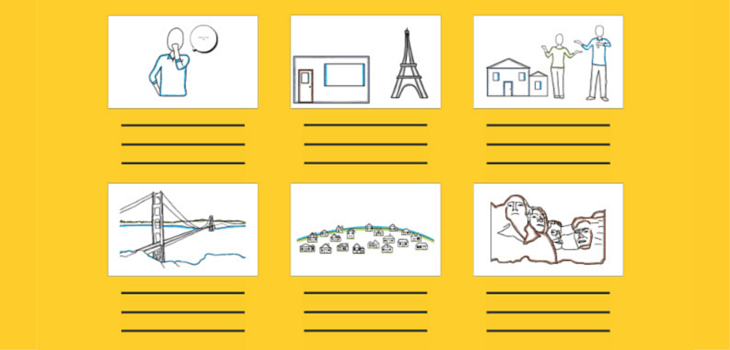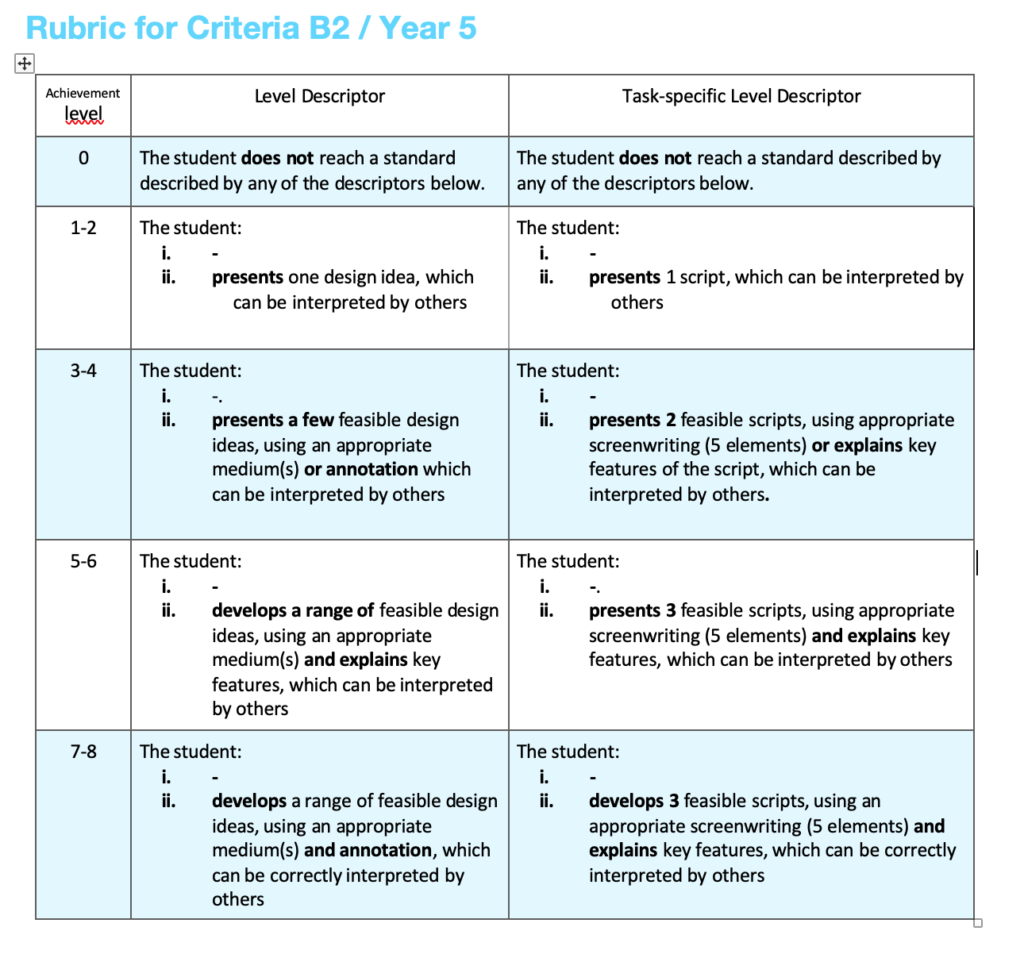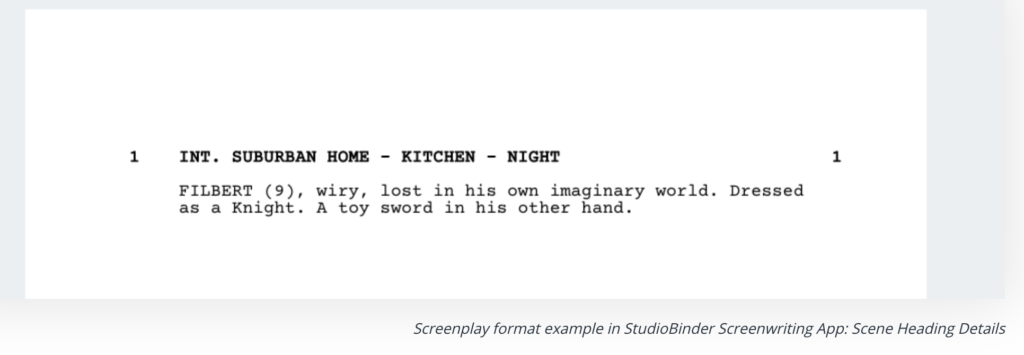G9 Tales with a Twist B
|
Please find here all the classes and materials for Criterion B: Class 19 (9N Nov 16th, 9O&9Q Nov 17th, 9L Nov 18th)First 40 minutes Finish up your story boards and scan them in or take a clear picture to upload and include in your task sheet. Last 40 minutes With your completed story board you can now complete your list of requirements really easily. These are the things to consider:
We will upload Summative B at the end of the class.
Class 18 (9N Nov 10th, 9O&9L Nov 11th, 9Q Nov 12th)Let’s continue drawing Spend some time drawing on the paper. Listen to music. Have fun. Laugh of your failed drawings. Show friends and see if they understand. Don’t stress at this point. Today is class 18 and you will have time today and to finalize it on the first 40 minutes of class 19th. We will spend the second half of the class completing the requirements and we will upload Summative B at the end of the class. We won’t have a checkpoint for B4, I will give you oral comments in class 18th and 19th.
Class 17 (9N Nov 5th, 9O&9L Nov 6th, 9L Nov 9th)Today we are going to start writing story boards for our final script. Task 1: What is a story board? Please write your answer on the chat box. Now, let’s watch this clip. Pay attention to all the little details. And now have a look at this:
Vyond.com is a good resource for storyboards. Have a look at this that comes from this website. “A storyboard is a graphic representation of how your video will unfold, shot by shot. It’s made up of a number of squares with illustrations or pictures representing each shot, with notes about what’s going on in the scene and what’s being said in the script during that shot. Think of it as sort of a comic book version of your script.
A storyboard is your roadmap when you make a video.” Task 2: How to draw a story board In order to complete the story board we are going to use this document that you can find on Managebac under Files.
We will follow the same rule that with screenwriting. One page it is normally one minute. So your story board should be 1-3 pages long. Never longer than 3. What if I have to draw a story board and I cannot draw? 😱 Task 3: Let’s draw Spend some time drawing on the paper. Listen to music. Have fun. Laugh of your failed drawings. Show friends and see if they understand. Don’t stress at this point. Today is class 17 and you will have time today, next class 18 for 80 minutes and you will ask to finalize it on class 19th, where you will be asked to upload the story board and the requirements at the end of the class with the rest of summative B. We won’t have a checkpoint for B4, I will give you oral comments in class 18th. Task 4: Story board checklist It is good to always check on why are we doing this and what are the things you need to make sure to have in your storyboard. According to the same website, Vyond.com, here are the key elements that every storyboard should include:
Story boards help you plan ahead and save a lot of time in your shooting: “a full storyboard has all of the information necessary to imagine how your finished video will appear. Reviewing your images and notes for each shot, you and your team can brainstorm how your video should be adjusted and what resources you will need in production.”
Class 16 (9N Nov 2nd, 9O&9L Nov 3rd, 9Q Nov 4th)Today we are going to start choosing what is our best script based on the specifications we wrote in B1. Next class we will draw the story boards of your final scripts so you can start picturing them in your mind and plan the steps more effectively.
Class 15 (9N Oct 28th, 9O&9Q Oct 29th, 9L Oct 30th)Today we are going to do the last round of feedback with a friend for the first 20 minutes. After that we will start completing B1, design specifications. Next class we will choose the best script or combination of scripts in B3, based on the comparison against the specifications you wrote in B1 and the comments received in the 3 rounds of feedback.
Class 14 (9N Oct 23rd, 9O&9L Oct 26th, 9Q Oct 27th)Today we are going to spend time working on our second ATL.
During our first criterion, we spent a lot of time working on Critical Thinking, and now we are going to combine it with our second ATL: Communication. In order to do this, you are going to have a gallery walk around and you are going to give and receive meaningful feedback to your classmates about their scripts. Task 1: Create a document (15 minutes) You are going to be interviewing 3 different classmates about your scripts. Think about what you would like to ask them. Here are some ideas.
Task 2: Get ready (5 minutes) Print your 3 scripts and print 3-4 copies of your questionnaire. Task 3: Start the rotations Your teacher will help you time them. Please write your name in the files you complete, since they may want to ask you questions later. 20 min. Sit down with friend 1, read the script and complete the questionnaire 20 min. Sit down with friend 2, read the script and complete the questionnaire 20 min. Sit down with friend 3, read the script and complete the questionnaire Please save the 3 questionnaires filled by your classmates, since you will need to include it as part of B3. We will discuss how next class. Have fun reading your classmates’ scripts!
Class 13 (9N Oct 20th, 9O&9L Oct 21st, 9L Oct 22nd)Today you have time to work on your scripts and ask me any questions that you may have. I will also be sharing individually your grades and comments for Criterion A. Please upload to Managebac at the end of the class so I can give you some comments.
Class 12 (9N Oct 15th, 9O&9L Oct 16th, 9Q Oct 19th)Today we will continue working on B2. Task 1: Self-evaluation A Today we will use the first 5-10 completing an auto-evaluation of our work in Criteria A. Please get the rubric I am going to send you an give yourself 5 different grades:
Please send me these grades by Teams chat so I can see them and I can call you to discuss the grades I gave you for the different tasks, before I post them to MB. Task 2: Have 3 clear ideas on how to twist your original story Make sure you have 3 ways to go. They can be minor twists. For ex. Your story could have the same beginning and middle but then 3 different endings. Let’s have a look at the rubric for B2.
Next class it will be the checkpoint for B0+B2.
Class 11 (9N Oct 12th, 9O&9Q Oct 13th, 9L Oct 14th)Today we will start working on Criteria B. Task 1: Upload to Managebac But before we do that, please upload to Managebac your criteria A, so I can grade you in the next few days. Task 2: Explain briefly your original story To start criteria B you need to have:
The first task we are going to do is to explain your story briefly:
Task 3: Come up with 3 ways to twist your story In the second task, we are going to be coming up with different twists for your story. You will be asked to present 3 different ways to twist or change your story to make it different than the original. In order to think about how to come up with possible solutions for your film we need to know how stories work. The typical formula, that works specially well for short films is the following: let’s talk about acts:
That does not mean you cannot change it and do something different, but it is nice to know about this first, to be able to twist it. In this video (from 0-3:33) they explain it in more detail: What is a script? In order to present your ideas you will be asked to write a script for each of the options. What is a script? A script is a document that includes all the information we need about a film. What do we need to write an script:
How to write a script? Writing scripts is an art, so in order to introduce you in this, we are going to start by looking a the important parts of script writing.
If you are interested in screen writing, this is a wonderful source. (I am borrowing the examples from Studiobinder.com.) But just to start, let’s concentrate on the 5 most important parts: 1. Scene heading: Where are we? It is important to set form the start where the action takes place. We will use INT. for interior spaces or EXT. for exterior spaces. Then a description of the setting, and then the time of day.
2. Subheading: If you want to use more detail you can say hallway, kitchen, bedroom…
3. Character introductions: “When you introduce a character in a screenplay, you want to use all-capital letters for the name of the character, then a reference to their age, and finally some information about their traits and personality”
4. Action: Action lines are where you describe the visual and audible actions that take place on screen. You want to write in third person in present tense.
5. Dialogue: Your lines of dialogue will be set underneath the character to which they are assigned. Dialogue is pretty straightforward from a formatting standpoint, but it is the most difficult part of screenwriting.
When you write scripts it is important to use use Courier font, as in the example, and center the dialogue as shown in the examples above.
Just so you know, normally one page of a script equals to one minute on your movie. So your script should not be longer than 3 pages. Task 4: Write 3 scripts. One per idea. Now is the time for you to write the scripts for the 3 possible ideas or ways to twist your story. Follow the instructions we learned about. And remember, you do not need to write a lot. Have fun! You can use a typical word document or you can try this free software. It will create the margins and provide the type for you. Quite simple.
You can also use the word document I created and follow that one. Find it on Managebac. |

















